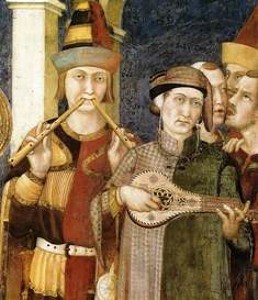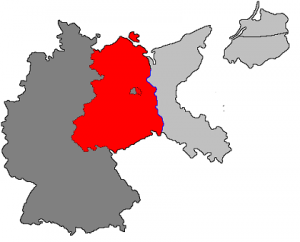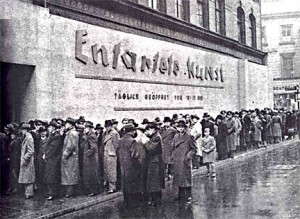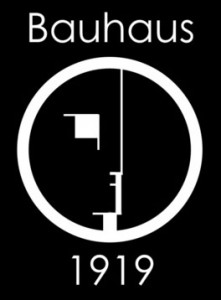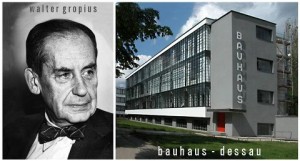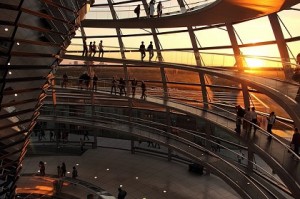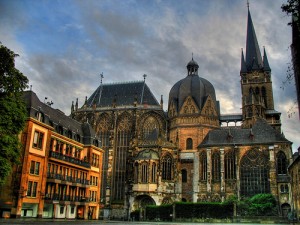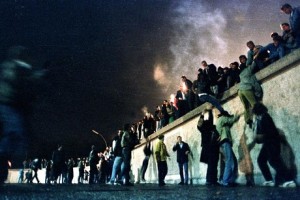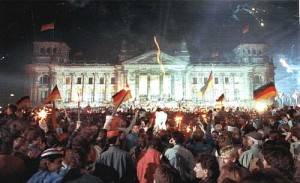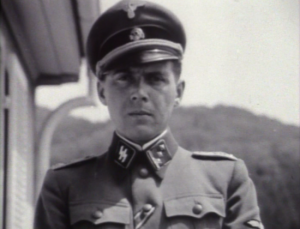Like in many other European cultures German poetry and music were derived from medieval ages of single performers whose life has enriched the pool of national legends and myths: it is not doubt that everyone has heard about minstrels and minnesingers who inspired their audience with romantic world of never-ending love and devotion, patriotism and … [Read more...]
East Germany
What is 'East Germany'? This question arises not just from political background of the country, but historical, too. Postwar society used to name Soviet GDR as 'East Germany': lands of Prussia, Silesia and Pomerania belonged to former GDR and located in the east of the Oder. Historically these lands were inhabited by Germans, but after the World … [Read more...]
Degenerate Art – “Entartete Kunst”
In 1937 in Munich the Nazis held an art exhibition of what they called Entartete Kunst, or Degenerate Art. The purpose of the exhibition was to let the Germans know that some forms and pieces of art were not accepted by the "highest race", and this art is "degenerate", also called as Jewish or Bolshevistic. During the "Entartete Kunst" campaign … [Read more...]
Nazi and Bauhaus School
The end of Bauhaus The Nazi majority of Dessau suspended the seat of learning. Paul Schultze-Naumburg was the architect that they sent into the school to re-establish pure German art instead of the "cosmopolitan rubbish" the Bauhaus artists were doing. He described Bauhaus furniture as Kisten, or boxes. Bauhaus was even as private institution so … [Read more...]
Bauhaus School
The beginning and the goals of Bauhaus Bauhaus: [Ger., lit. "architecture house", from Bau = building (bauen=to build) + Haus = house.] Contemporary German architecture set its main trends in the first thirty years of the 20th century. The strongest influences came from Weimar and Dessau, where the Bauhaus school was founded in 1919. Under the … [Read more...]
Architecture in Germany
Architecture in Germany has been greatly influenced by the styles in architecture and art of European countries. These styles were born and developed during ancient period of Charlemagne’s Empire to the modern history after the World War II. The most ancient architectural designs appeared since 800 AD when German architecture was featured by the … [Read more...]
Aachen Cathedral
Aachen Cathedral was included into UNESCO World Heritage List in 1978 and got one of the top sites of the list due its unique history enriched by legends and myths and luxurious treasures kept in the cathedral. Construction of this palatine chapel, with its octagonal basilica and cupola, began c. 790–800 under the Emperor Charlemagne. Originally … [Read more...]
The Fall of the Wall and Reunification
In the middle of the 1980s the Cold War started to melt, especially due to the changes in the Soviet government. Mikhail Gorbachev, the first and the only President of the USSR, started a new political wave called Perestroika, and made a friendly step towards the West acknowledging the dependence of the Soviet Union on the high technologies and … [Read more...]
German Reunification: Bored or Happy?
On October 3, Germany celebrates its Unification Day (Tag der Deutschen Einheit). This day back in 1990 brought a happy and a very significant event on the world political scene. The symbol of the Cold War - the Berlin Wall - was torn down, and East Germans could freely face the world. To have a better understanding of what actually happened in … [Read more...]
Josef Mengele – the Infamous Nazi Doctor
Some readers may accuse such action to place an article about the person who brought great shame and shadow to German history into the 'Famous People' link. But Dr. Josef Mengele was one of the most infamous persons in German history and everybody must remember his name in order to prevent the horror in a future. He was sent to Auschwitz in 1943 … [Read more...]
